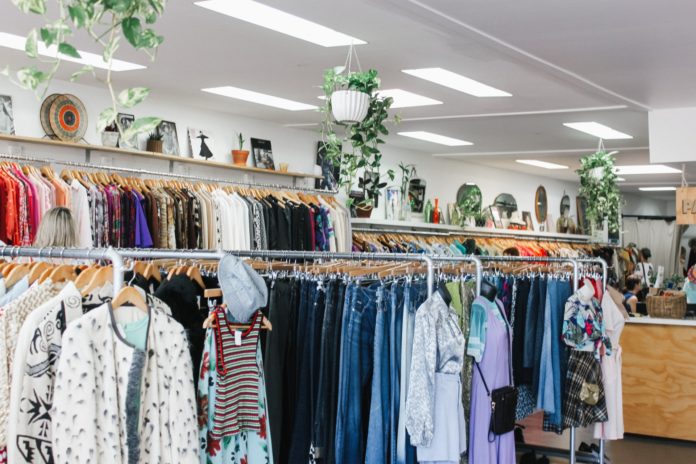As someone who grew up in a very middle class family, thrifting has been a part of my life for as long as I can remember. Value Village, Talize, and Salvation Army were staples of my childhood, but I felt ashamed for not buying clothes from the mall. When I was younger, before thrifting was trendy, I worried about the day my friends found out my clothes were second-hand. In high school, I told my crush my fancy new jeans were from the thrift store, and he was disgusted. Even though my clothes fit in and fit me, it was embarrassing to not buy everything from popular department stores.
When I turned 13, my aunt took me to the mall for the very first time on my birthday, and I was shocked! Who would pay $35 for a plain black t-shirt? It was insane to me that it was “normal” for kids to spend hundreds of dollars on a couple of pairs of jeans. It was then that I realized thrifting wasn’t so bad after all. I still got a great selection of clothes, but I could actually afford to get more than one pair of pants. Since then, I have been an unapologetic thrifter, and now, going to the thrift store is something to brag about, not hide. It has really become a trend in recent years, with thrifting going from a 96 billion dollar industry in 2021 to a projected $218 billion by 2026.
But the trendy-ness of thrifting has its downfalls, too. Just because a store claims to be devoted to charity and helping the climate does not mean they are actually doing so. Larger thrift stores like Value Village market themselves as a non-profit, but often only give 17 per cent of their profits made from donations to charities. Only around 25 per cent of donated clothing actually gets sold at thrift stores, and the rest of the donated items get thrown away, recycled, or shipped overseas. However, not all thrift stores do this, and some, like the Salvation Army and the MCC, fund their nonprofits through thrift store sales.
While I love that thrifting has been destigmatized and is promoted for those who can benefit from it, I think that the trend of it has made the original point of second-hand get lost. As it has become more and more trendy, big thrift stores are using the popularity to jack up prices without any true consequences. It seems like the constantly increased profits of the higher-ups in companies like Goodwill are being funded by the people who can only afford to buy their clothes second-hand.
To me, it seems that thrifting has been popularized mostly by youth who are trying to keep up with constantly changing trends. We buy new clothes all the time only to have to get rid of them soon after once the pieces go out of style. This is causing many people to try reselling to get back some of the money they spent. Unfortunately, this trend of overconsumption and then reselling at marked up prices is bringing what many people are calling the “gentrification of thrifting.” Even if resellers are only adding a modest markup to pay for the time spent selecting their items from the store and then adding on the site’s commission and shipping fees, it still is taking items meant for people looking for affordable clothing and turning it into trendy but equally expensive clothing that you can find in a typical store. While reselling can bring accessibility to people who cannot physically access thrift stores, it definitely has some problematic issues in and of itself.
As I have gotten older, I have realized how much better it is for my wallet and the planet to define my own style and then purchase pieces that go with it and that I will wear for many years, instead of trying to keep up with trends that change on a whim. People need to be careful of how much they buy into this thrifting trend and make sure they consider other people by buying only what they will actually use themselves, and by being aware of how trendy-ness affects the longevity of their purchases when trying to utilize second-hand shopping.
Allison is starting her BA in English with a minor in Criminology to become a publishing contract lawyer. In her spare time, she watches way too many true crime shows and reads a lot of Y.A. fiction, while slugging along on various articles.


